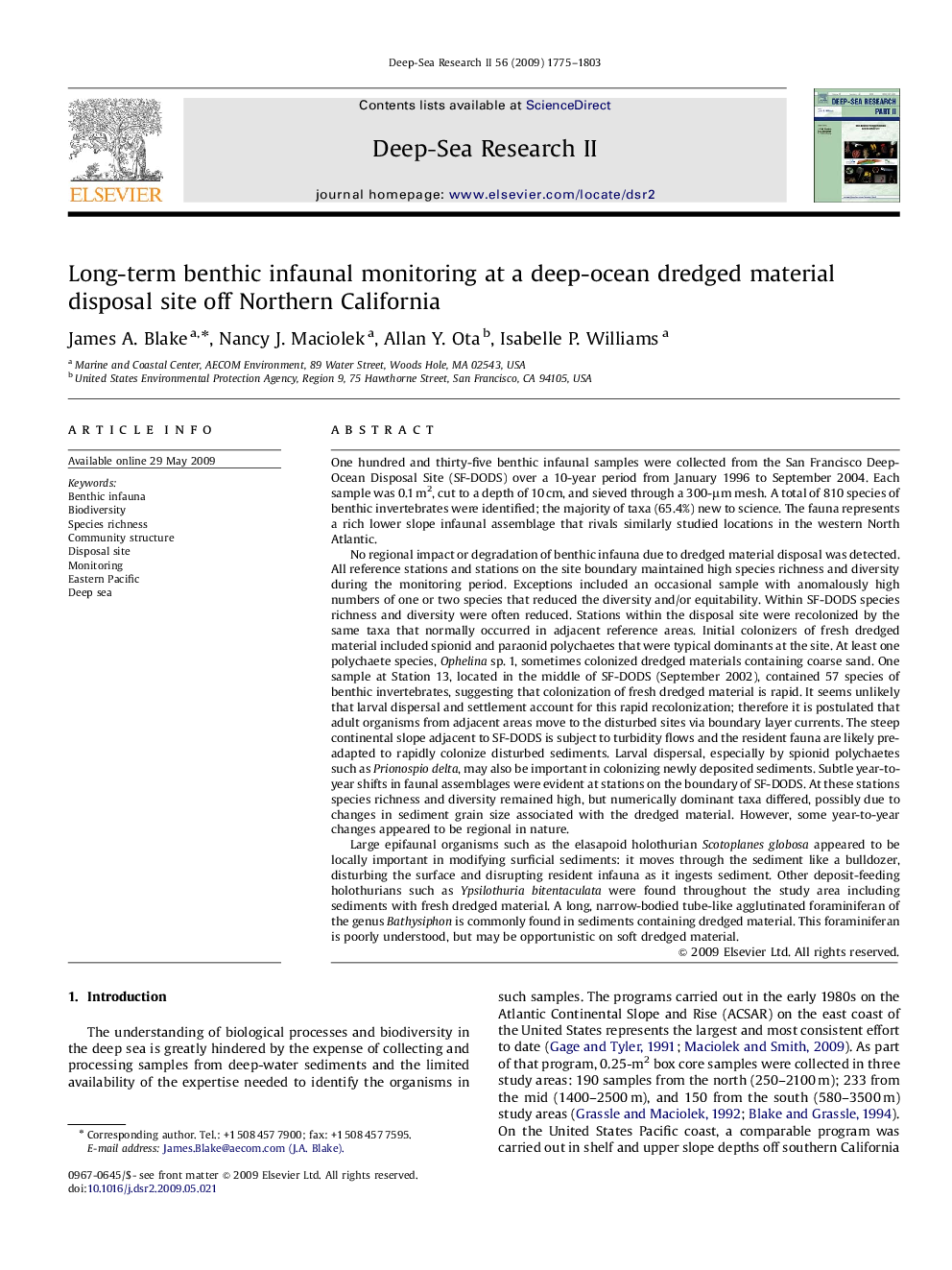| کد مقاله | کد نشریه | سال انتشار | مقاله انگلیسی | نسخه تمام متن |
|---|---|---|---|---|
| 4537301 | 1626482 | 2009 | 29 صفحه PDF | دانلود رایگان |

One hundred and thirty-five benthic infaunal samples were collected from the San Francisco Deep-Ocean Disposal Site (SF-DODS) over a 10-year period from January 1996 to September 2004. Each sample was 0.1 m2, cut to a depth of 10 cm, and sieved through a 300-μm mesh. A total of 810 species of benthic invertebrates were identified; the majority of taxa (65.4%) new to science. The fauna represents a rich lower slope infaunal assemblage that rivals similarly studied locations in the western North Atlantic.No regional impact or degradation of benthic infauna due to dredged material disposal was detected. All reference stations and stations on the site boundary maintained high species richness and diversity during the monitoring period. Exceptions included an occasional sample with anomalously high numbers of one or two species that reduced the diversity and/or equitability. Within SF-DODS species richness and diversity were often reduced. Stations within the disposal site were recolonized by the same taxa that normally occurred in adjacent reference areas. Initial colonizers of fresh dredged material included spionid and paraonid polychaetes that were typical dominants at the site. At least one polychaete species, Ophelina sp. 1, sometimes colonized dredged materials containing coarse sand. One sample at Station 13, located in the middle of SF-DODS (September 2002), contained 57 species of benthic invertebrates, suggesting that colonization of fresh dredged material is rapid. It seems unlikely that larval dispersal and settlement account for this rapid recolonization; therefore it is postulated that adult organisms from adjacent areas move to the disturbed sites via boundary layer currents. The steep continental slope adjacent to SF-DODS is subject to turbidity flows and the resident fauna are likely pre-adapted to rapidly colonize disturbed sediments. Larval dispersal, especially by spionid polychaetes such as Prionospio delta, may also be important in colonizing newly deposited sediments. Subtle year-to-year shifts in faunal assemblages were evident at stations on the boundary of SF-DODS. At these stations species richness and diversity remained high, but numerically dominant taxa differed, possibly due to changes in sediment grain size associated with the dredged material. However, some year-to-year changes appeared to be regional in nature.Large epifaunal organisms such as the elasapoid holothurian Scotoplanes globosa appeared to be locally important in modifying surficial sediments: it moves through the sediment like a bulldozer, disturbing the surface and disrupting resident infauna as it ingests sediment. Other deposit-feeding holothurians such as Ypsilothuria bitentaculata were found throughout the study area including sediments with fresh dredged material. A long, narrow-bodied tube-like agglutinated foraminiferan of the genus Bathysiphon is commonly found in sediments containing dredged material. This foraminiferan is poorly understood, but may be opportunistic on soft dredged material.
Journal: Deep Sea Research Part II: Topical Studies in Oceanography - Volume 56, Issues 19–20, September 2009, Pages 1775–1803